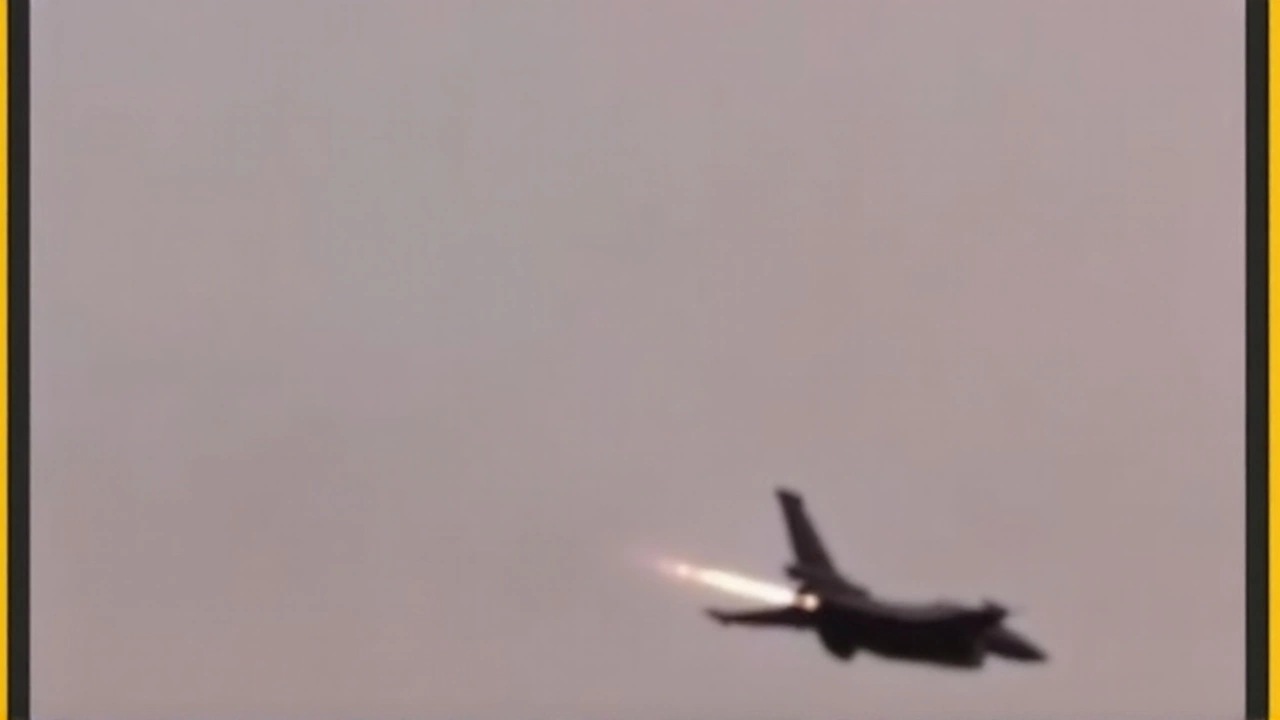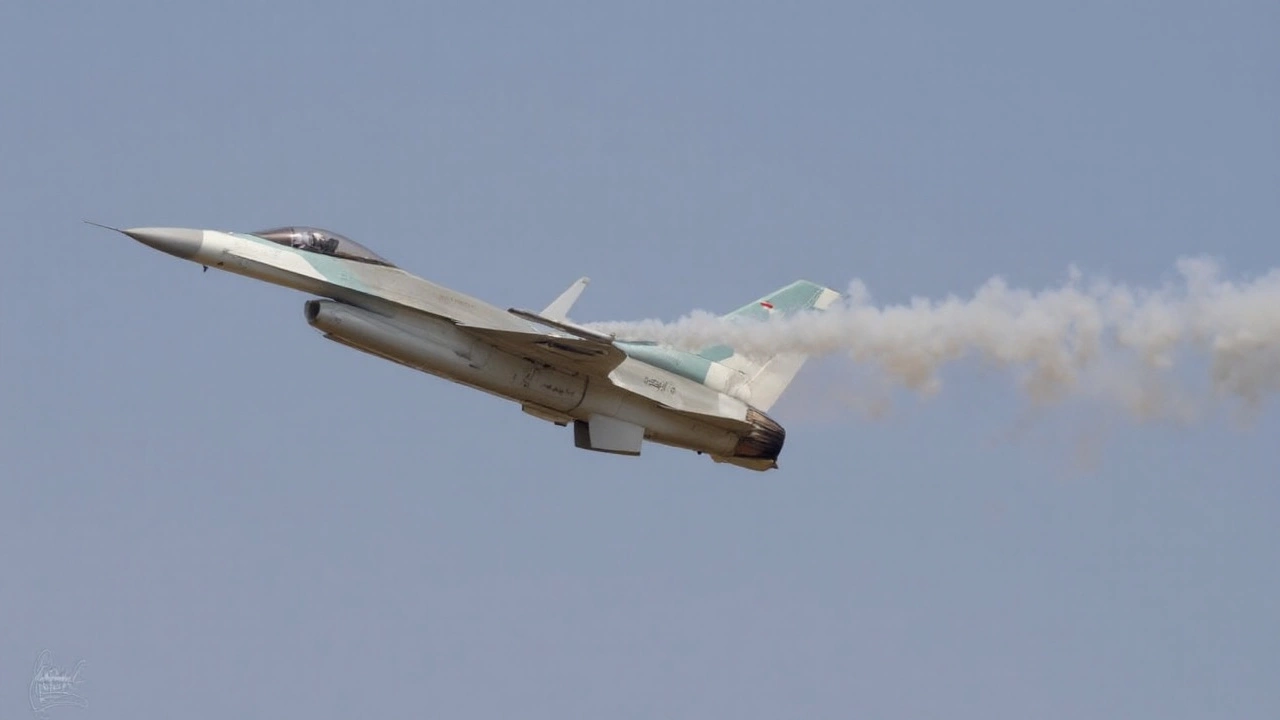What happened over Radom
A frontline Polish Air Force F-16 went down during a rehearsal for the Radom Airshow on Thursday, killing the pilot and forcing organizers to cancel the weekend event. The crash happened around 5:30 p.m. GMT in central Poland, during a sequence of aerobatic maneuvers intended for the public program.
Video recorded from the airfield shows the jet entering a rolling maneuver and then losing altitude before striking the ground. A fireball followed, and the aircraft slid across the runway area. Emergency crews stationed for the rehearsal responded immediately, but the pilot—an officer assigned to the 31st Tactical Air Base near Poznań—did not survive.
Poland’s General Command confirmed the aircraft belonged to the 31st Tactical Air Base, one of the country’s main F-16 units. Officials said no bystanders or ground crew were injured, a sign that the airshow safety cordon worked as intended. The impact and fire damaged the runway and surrounding pavement, leaving debris across a large section of the operating area.
Defense Minister Władysław Kosiniak-Kamysz visited the site and posted a tribute on X, calling the fallen aviator an officer who served with dedication and courage. Authorities did not immediately release the pilot’s name pending formal notifications to family.
With the runway out of service and the investigation already in motion, organizers announced that the Radom Airshow would not go ahead this weekend. The event was set to bring together Polish and international military demonstration teams along with civilian aerobatic performers—an annual showcase that typically draws big crowds to Radom.
The crash is a sobering reminder of the risks that come with high-performance flying, even in a controlled environment. Display routines are scripted and approved in advance, pilots practice for months, and emergency services are kept on standby. Yet, as this case shows, the margin for error at low altitude is thin.

Investigation, safety rules, and what comes next
The Polish military has opened a formal inquiry to determine what caused the accident. Investigators will combine eyewitness accounts, video from the airfield, maintenance logs, and any onboard data to build a timeline of the final seconds of flight. Weather at the time, briefings given before the rehearsal, and the exact parameters of the maneuver will all factor into the analysis.
Teams typically examine several lines of evidence after a crash of this kind:
- Flight data and cockpit indications available from onboard systems and ground tracking.
- Maintenance records, recent inspections, and any reported snags or alerts.
- Pilot training records, currency for aerobatic profiles, and fatigue factors.
- Environmental conditions: wind, temperature, visibility, and runway state.
- Display rules: authorized maneuver heights, speeds, and safety gates.
One central question will be how quickly altitude and airspeed bled off during the rolling sequence shown on video. At display altitudes, seconds matter. If a roll is started below a safe gate—or if energy isn’t managed precisely—there may not be time or altitude to recover. Investigators will also look at whether the pilot attempted to eject and if there was any technical failure that degraded control.
Airshow organizers operate under strict safety rules designed to protect the public. Display lines keep aircraft well away from spectator areas. Minimum heights and offset distances are set for each type of maneuver, and pilots rehearse the same routine multiple times in the days before a show. The lack of injuries on the ground in Radom suggests those measures worked as intended, even in a worst-case scenario.
The runway damage complicates the recovery. Crash teams have to secure the site, document debris, and move wreckage before repairs can start. Until that’s done—and until investigators are satisfied they have what they need—the airfield won’t return to normal operations. Canceling the airshow clears the schedule for that work. It also avoids putting additional aircraft into a space that now doubles as an accident scene.
For Radom, the cancellation is more than a lost weekend. The airshow is one of Poland’s biggest aviation events, usually mixing frontline military jets, historic aircraft, and civilian stunt teams. Hotels fill up, restaurants get a boost, and local businesses plan around the influx. Organizers said they would share practical information for ticket holders and participants after the immediate response and recovery phase.
The F-16, known in Polish service as the Jastrząb (Hawk), is the backbone of Poland’s fighter fleet. Poland’s F-16 squadrons conduct quick reaction alert duties at home and support NATO missions abroad. The aircraft has a long global track record and a strong safety record relative to the hours flown, but it demands precision—especially at low altitude where display routines leave almost no room to fix a mistake.
The 31st Tactical Air Base, located near Poznań, is one of Poland’s key F-16 hubs and regularly supports international exercises and air policing. Crews there train for both combat missions and public demonstrations. Rehearsals are meant to validate the routine under supervision and to check that timing, spacing, and emergency support all line up before crowds arrive.
Poland is also modernizing its air arm with new platforms, part of a broader defense upgrade. In recent years Warsaw has committed to next-generation fighters and advanced training jets, aiming to spread flying hours across a more modern fleet and deepen safety and training standards. Thursday’s loss will prompt fresh internal reviews of display risk management, even as routine flight operations continue nationwide.
When military accident boards publish findings, they often recommend changes that ripple beyond a single unit—adjusted maneuver gates, revised briefing procedures, or updates to aircraft checklists. That process takes time. In the short term, airshow organizers elsewhere in the region may revisit their own display profiles and emergency plans, comparing them against what investigators in Poland eventually learn from Radom.
For now, the focus is on the pilot, the unit, and the community that expected a celebration of aviation this weekend but will instead be dealing with grief and questions. Tributes are flowing from across the Polish military and from partner air forces that have flown alongside the 31st’s F-16s in NATO exercises. A formal remembrance is likely once the family’s wishes are known.
Authorities have not given a timeline for the investigation. That’s normal; collecting data, interviewing witnesses, and testing components can take months. Until then, officials say the priority is to secure the site, restore the airfield, and support the pilot’s family and colleagues.
The phrase many aviators lean on—“aviation is not inherently dangerous, but it is terribly unforgiving”—will feel painfully real in Radom. The systems worked where they were meant to, keeping the public safe. But the loss is heavy, and the answers will have to come from careful, methodical work by investigators. The country will be watching for those answers—not to assign blame, but to reduce the chance that a tragedy like this happens again.
As the weekend approaches without the roar of jet engines over Radom, one fact stands out: the pilot died in the course of service, performing a routine he had trained for, in an aircraft central to Poland’s defense. The Polish F-16 crash will now be studied detail by detail in hopes of making future flights—and future airshows—safer.

Arlen Fitzpatrick
My name is Arlen Fitzpatrick, and I am a sports enthusiast with a passion for soccer. I have spent years studying the intricacies of the game, both as a player and a coach. My expertise in sports has allowed me to analyze matches and predict outcomes with great accuracy. As a writer, I enjoy sharing my knowledge and love for soccer with others, providing insights and engaging stories about the beautiful game. My ultimate goal is to inspire and educate soccer fans, helping them to deepen their understanding and appreciation for the sport.
view all postsWrite a comment